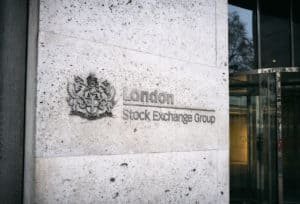 The London Stock Exchange Group’s (LSEG) pan-European MTF, Turquoise, has re-introduced trading tariffs as part of a wider Liquidity Incentive Scheme in a bid to boost activity on its lit markets.
The London Stock Exchange Group’s (LSEG) pan-European MTF, Turquoise, has re-introduced trading tariffs as part of a wider Liquidity Incentive Scheme in a bid to boost activity on its lit markets.
Effective from 1 September, the venue has re-introduced a Standard Tariff which applies to firms that are not part of its proprietary liquidity provision scheme. The Tiered Passive Fees and Tiered Aggressive Fees charge 0 basis points and 0.30 basis points respectively, subject to regulatory non-objection. The system will reward participants more for scale.
Formerly known as ‘maker or taker rebates’, the system was originally designed to reward participants with a fee if they contributed to liquidity by placing an order; and charge them one if they remove it by grabbing one.
LSEG’s Turquoise, along with several other venues, removed the tariffs in 2018 following canvassing from participants who claimed that the tariff system harmed best execution by encouraging firms to execute on the venue with fees that rewarded them the most for their flow.
The new standard tariff will not apply to those participants who opt into the wider Liquidity Incentive Scheme, which includes negative fees for passive flow immediately, growing through monthly value traded thresholds, and reduced tiered aggressive fees above monthly value traded thresholds. The scheme is open to all members but they must opt in and meet 0.5% passive share of trading. For proprietary trading or principal flow only, Turquoise has implemented a negative feed-based incentive and a standard aggressive rate of 0.3 basis points.
Chief executive officer of Turquoise, Robert Barnes, told The TRADE that the re-introduction of the fees as part of its Liquidity Incentive Scheme would encourage more volumes back onto its lit markets.
“Introducing this new fee structure matters because it enables participants to benefit from efficiencies they bring to the market,” Barnes told The TRADE. “The new Turquoise Lit tariffs are very competitive with a focus on quality and a philosophy to share benefits with members contributing to growth. More turnover from a wider diversity of members naturally adds to the quality of multilateral order flow, contributing ultimately to better results on a consistent basis for investors.”
The move is part of a greater three-pronged push to encourage more volumes onto its lit markets: which also includes its recent decision to bolster its testing environment CDS Plus with new technology and its plans to open Turquoise Plato Lit auctions up to retail traders through the addition of a retail flag and market makers towards the end of the year.
The re-introduction, if successful in driving volumes back onto the lit markets, is also likely to have significant implications for the value of Turquoise’s market data, as more bids and offers included on feeds makes them more valuable to the market.
The back story
Originally developed by challenger exchange Chi-X – now part of Cboe – in 2007, the rebate system was designed to change the economics of an exchange by forcing incumbent participants to fork out for any liquidity they were removing from the market. Chi-X’s original concept took 0.3 of a basis point from an order and rebated 0.2 of that back to the participant that had posted that liquidity. By 2010, Chi-X claimed to have grabbed 25% market share excluding the Opening and Closing Auctions on the back of the new rebate system.
“A lot of the investment banks set their algorithms to only ever take liquidity. They will look and see that the stock is cheapest on one exchange and they’ll go and take it. They don’t post bids or offers on exchanges nearly as much as they should,” Tony Mackay, founding chief executive officer at Chi-X Global, told The TRADE.
“The principle [of rebates] was that the people who were sucking liquidity out of the system should essentially pay for the liquidity that is provided by a market maker. Before, it was opaque, and you could never work out how much a market maker was making with our system.”
Chi-X’s launch was swiftly followed by similar concepts brought to market by BATS Global, Nasdaq, SIX and Eurex. Variations of a model that rewards traders for volumes are still championed today at Cboe Global Markets and pan-European exchange Aquis.
Payment for order flow
However, the rebate system has repeatedly suffered from being confused with concepts such as payment for order flow (PFOF) – an increasingly taboo practice across global markets.
Many argue that the rebate system creates sub-optimal behaviour, encouraging participants to chase better fees, as opposed to best execution. This argument is not dissimilar from the one made against PFOF: that claim that the practice rewards certain market makers with vast amounts of retail flow in exchange for being the highest bidder as opposed to having the best execution.
“It’s important to understand that when the prices were being posted on our market, they were then available for anyone in that market to interact with,” added Mackay. “It wasn’t like the retail payment for order flow where it was just between one market maker and the clients of that brokerage.”
Renewed optimism
With the change in circumstances around the regulation of best execution, however, Turquoise hopes that the resumption of the tariff conditions will improve its lit volumes across Europe – a key objective of LSEG over the coming year.
Given that following its removal in 2018, Turquoise lot orders declined by an estimated 50% in 2019, its impact could be significant when it comes to the exchange’s pan-European ambitions.